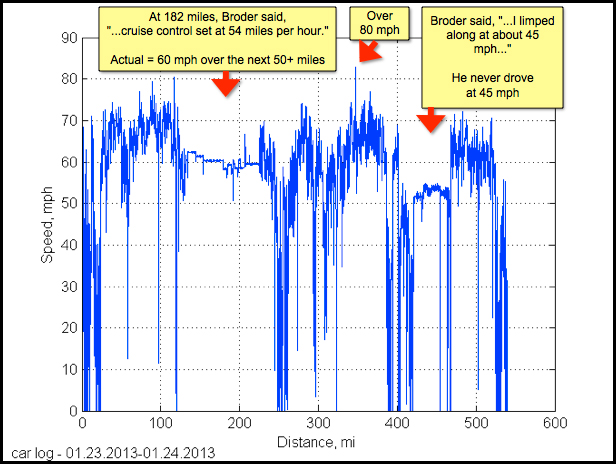
A Most Peculiar Test Drive
By Elon Musk, Chairman, Product Architect & CEO
February 13, 2013
You may have heard recently about an article written by John Broder from The New York Times that makes numerous claims about the performance of the Model S. We are upset by this article because it does not factually represent Tesla technology, which is designed and tested to operate well in both hot and cold climates. Indeed, our highest per capita sales are in Norway, where customers drive our cars during Arctic winters in permanent midnight, and in Switzerland, high among the snowy Alps. About half of all Tesla Roadster and Model S customers drive in temperatures well below freezing in winter. While no car is perfect, after extremely thorough testing, the Model S was declared to be the best new car in the world by the most discerning authorities in the automotive industry.
To date, hundreds of journalists have test driven the Model S in every scenario you can imagine. The car has been driven through Death Valley (the hottest place on Earth) in the middle of summer and on a track of pure ice [ http://www.youtube.com/watch?v=i0sflIrq_UM ] in a Minnesota winter. It has traveled over 600 miles in a day from the snowcapped peaks of Tahoe to Los Angeles, which made the very first use of the Supercharger network, and moreover by no lesser person than another reporter from The New York Times. Yet, somehow John Broder “discovered” a problem and was unavoidably left stranded on the road. Or was he?
After a negative experience several years ago with Top Gear, a popular automotive show, where they pretended that our car ran out of energy and had to be pushed back to the garage, we always carefully data log media drives. While the vast majority of journalists are honest, some believe the facts shouldn’t get in the way of a salacious story. In the case of Top Gear, they had literally written the script before they even received the car (we happened to find a copy of the script on a table while the car was being “tested”). Our car never even had a chance.
The logs show again that our Model S never had a chance with John Broder. In the case with Top Gear, their legal defense was that they never actually said it broke down, they just implied that it could and then filmed themselves pushing what viewers did not realize was a perfectly functional car. In Mr. Broder’s case, he simply did not accurately capture what happened and worked very hard to force our car to stop running.
Here is a summary of the key facts:
When Tesla first approached The New York Times about doing this story, it was supposed to be focused on future advancements in our Supercharger technology. There was no need to write a story about existing Superchargers on the East Coast, as that had already been done by Consumer Reports [ http://news.consumerreports.org/cars/2013/01/rapid-charging-at-a-tesla-ev-supercharge-station.html ] with no problems! We assumed that the reporter would be fair and impartial, as has been our experience with The New York Times, an organization that prides itself on journalistic integrity. As a result, we did not think to read his past articles and were unaware of his outright disdain for electric cars. We were played for a fool and as a result, let down the cause of electric vehicles. For that, I am deeply sorry.
When I first heard about what could at best be described as irregularities in Broder’s behavior during the test drive, I called to apologize for any inconvenience that he may have suffered and sought to put my concerns to rest, hoping that he had simply made honest mistakes. That was not the case.
In his own words in an article published last year [ http://www.nytimes.com/2012/03/25/sunday-review/the-electric-car-unplugged.html?pagewanted=all&_r=3& ], this is how Broder felt about electric cars before even seeing the Model S:
"Yet the state of the electric car is dismal, the victim of hyped expectations, technological flops, high costs and a hostile political climate.”
When the facts didn’t suit his opinion, he simply changed the facts. Our request of The New York Times is simple and fair: please investigate this article and determine the truth. You are a news organization where that principle is of paramount importance and what is at stake for sustainable transport is simply too important to the world to ignore.
Vehicle Logs for Media Drive by John Broder on January 23 and 24

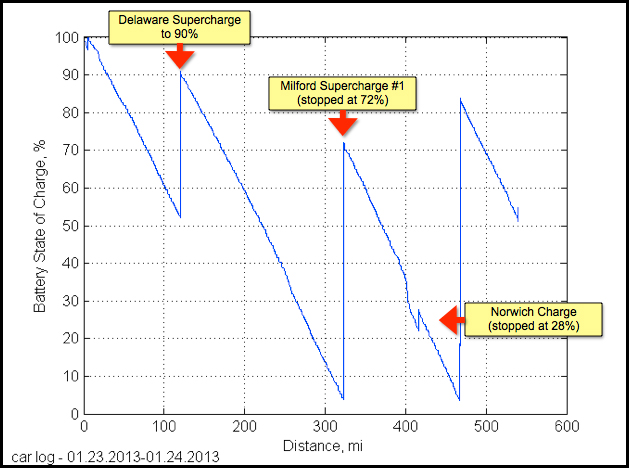
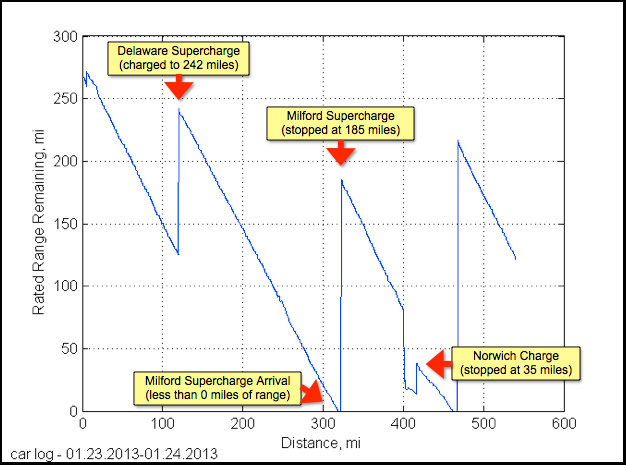
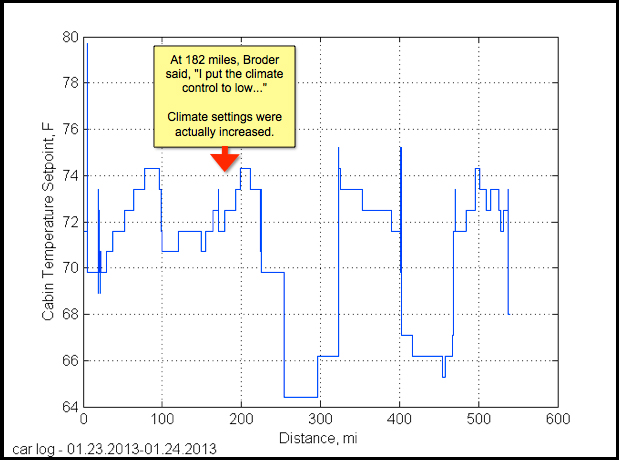
Detail showing car driving around in circles in front of the Milford Supercharger
trying to get Model S to stop with zero range indicated:
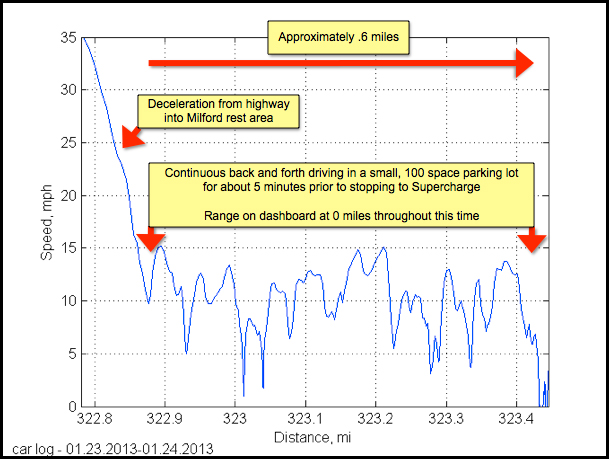
Two inaccuracies in the graphic attached to Broder's article:

Google Map with Tesla comments showing actual performance of Model S and Broder's intentions:

Map provided by PlugShare [ http://www.plugshare.com/ ] of charging stations along Broder's entire route:
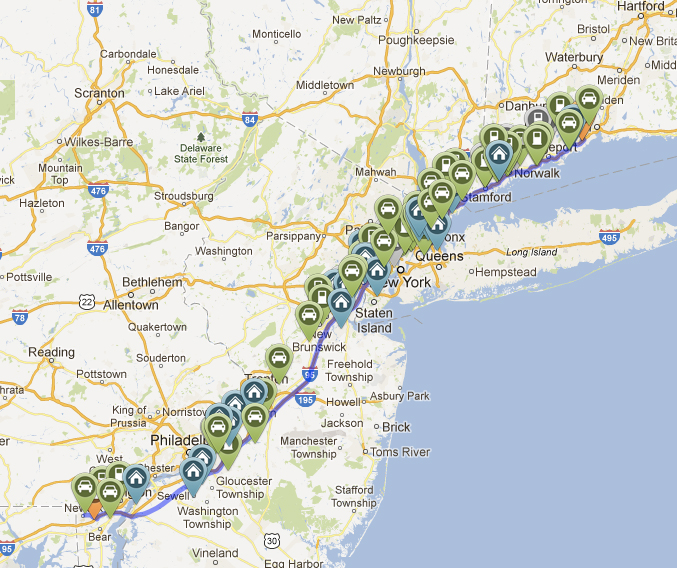
Copyright 2013 http://www.teslamotors.com/blog/most-peculiar-test-drive